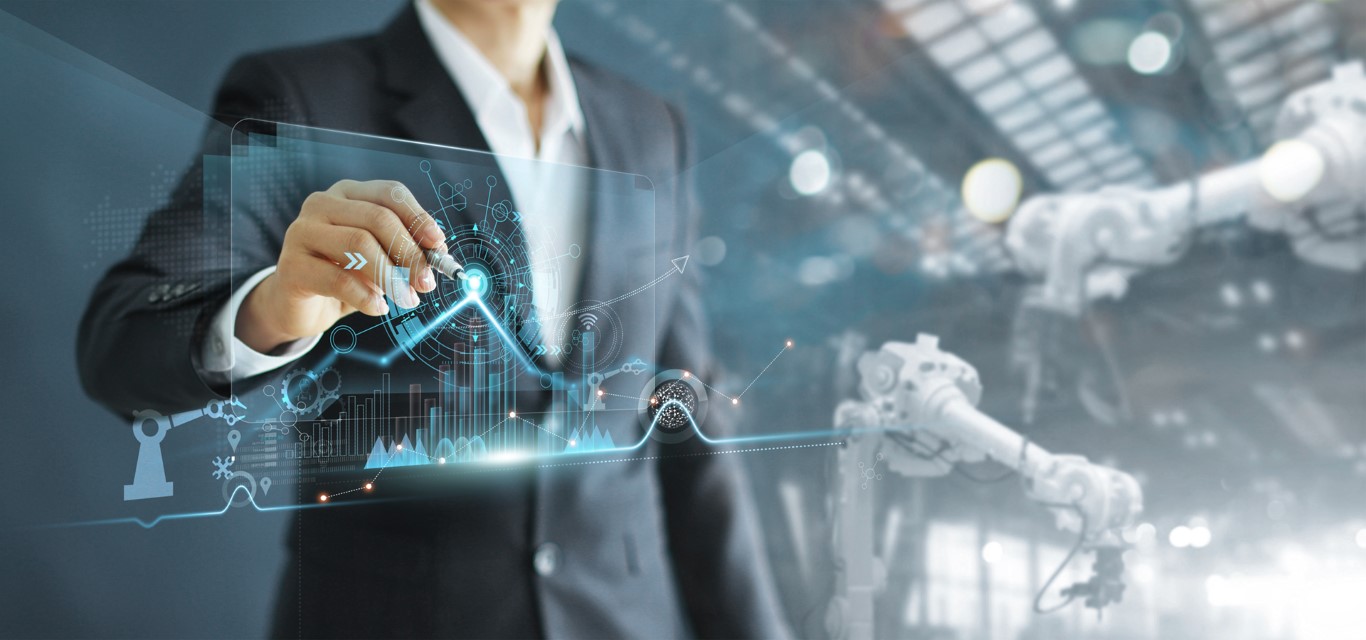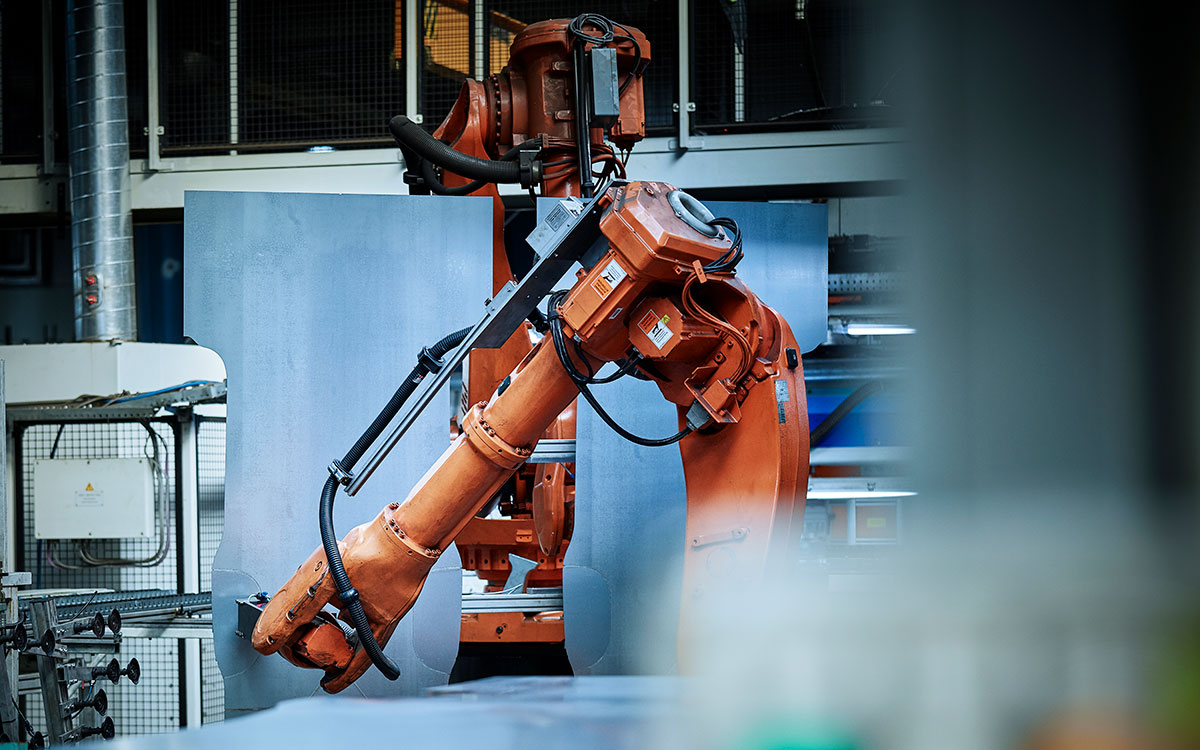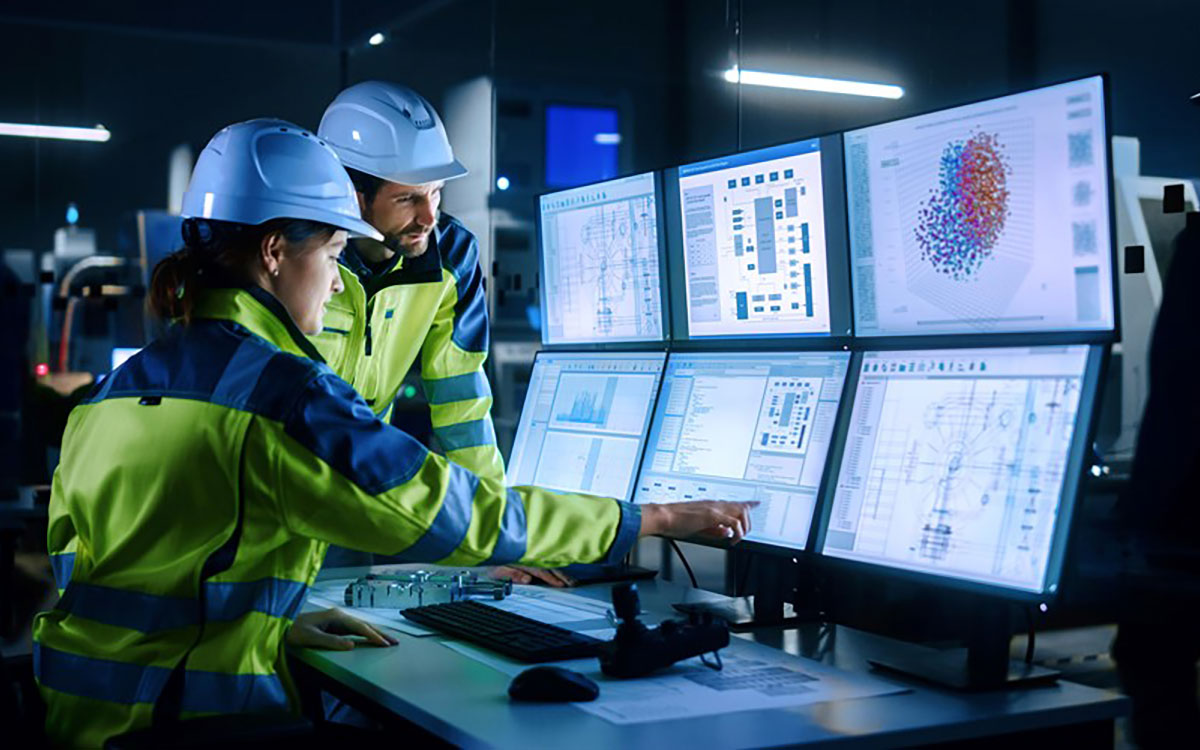
The problem with some discussions about Artificial Intelligence is that they tend to deal with generalities. But real business is never general – it is always specific.
In this blog, I will look at a very real need for manufacturers, which is the evergreen challenge of quality assurance (QA) – and argue that AI is making rapid inroads into tasks that have avoided automation until now.
What’s been holding us back?
AI – in this case, vision-based artificial intelligence, is different from image recognition. It can involve layers of different kinds of imagery – conventional photography, video, Lidar and other 3D data, thermal images, infra-red, ultrasound and others – and has reached the point where it can trigger massive savings and efficiencies in quality assurance (QA).
Fujitsu’s Computer Vision offerings solve challenges where inspection and analysis cannot be performed adequately due to limited data, high accuracy requirements, risk of danger to employees, cost and speed. Through customer engagements, we have seen, for example, the realization of 80% improvements in inspection times, which have translated to almost 32,000 person-hours of saved work.
Our customers reckon it takes three years to train QA people for highly specialized manufacturing operations. But at any time, some of those people might be unwell, on leave, thinking of retiring or making a career change. This is a high training investment in an uncertain environment.
On the other hand, a machine does not call in sick or take holidays, and it is predictably consistent - you can reliably compare data on what is happening year after year, or batch after batch.
Despite the apparent advantages, manufacturing is still at the start of this journey. Only about 30% of QA is currently automated. On the other hand, in production environments, the proportion of automated to non-automated tasks is the opposite way around – with automation typically reaching 70% or higher. So, there is enormous scope for cost savings - and greater accuracy - in this area of manufacturing.
One reason for this imbalance is that unnecessarily complicated and expensive solutions have held back innovation. While they might be great for one specific task – customers often can’t leverage the experience and expand to other use cases. It is not that the technology cannot do it – but it has not been bought (or sold) in a modular, reusable format. The investment case has to start from scratch every time.
Technology that is reusable
Despite the apparent attractions of vision-based artificial intelligence for QA, people are still a bit cautious. This is perhaps because they think huge gains only come with an equally large investment.
Fujitsu’s Computer Vision Solutions use a ‘framework’ approach to combine a robust application platform and state-of-the-art image recognition algorithms that let our customers access advanced technology at a sensible cost, using modular components.
Together with Fujitsu, businesses build value creation projects and adapt the components used – leveraging the strength of their people - toward new needs, such as production floor and quality control optimization, improved employee safety and even production security, without significant new investment.
We believe this is a technology that is completely aligned with manufacturers’ business needs, and we are investing heavily for the future to ensure manufacturing customers can seamlessly integrate these technology capabilities and services into their operations.
It’s undoubtedly the right approach for our times. In the recent IDC InfoBrief ‘Enabling Operations Transformation’, sponsored by Fujitsu, about how companies move forward from the pandemic economy, the concept that struck home for me was the need for what IDC calls “targeted investments".
According to IDC, to transform operations in the long-term, targeted investments will be required, aimed at creating a Future Enterprise with transparent, responsive and customer-centric operations that enable manufacturers to respond to changing market requirements in a timely and flexible manner.
I take from that the simple reality that, while organizations are recovering from one of the greatest economic shocks ever, they are not looking for large, high-risk, bet-the-farm investments. This fits perfectly with our own “think big, start small” approach, which aims to find the most economical way of getting the ball rolling towards transformation.
Find the value
Starting small with targeted investments is the way to go. The way you approach it is important: It has to be 100% PoV led, with investment following the business case all the way.
At one of Fujitsu’s customers – a major European public infrastructure operation – we had to demonstrate our technology capabilities so that management would envision and trust how precise the outcome could be. What they wanted to know was whether AI could produce nothing less than a digital map of all their assets – hundreds of thousands of them installed over a history extending back over 150 years.
The conventional method - sending people out to hunt for the assets – is time-consuming, costly, and potentially dangerous for the people on or near the infrastructure. It also comes with few guarantees of accuracy. The critical question mark was whether our approach would provide the desired level of accuracy to detect flaws in the infrastructure. We were able to show that by using 3D Lidar data from sensors mounted on vehicles, vision-based artificial intelligence can handle the task comfortably and is faster, safer, more accurate and cheaper than any other method.
The tide is turning
Things are changing. From a situation where only a few people were considering vision-based artificial intelligence to solve business problems, we now have customers coming to us with innovative ideas to take advantage of the technology. An example is a major French supermarket chain that wanted to see if it could cut errors and potential fraud at its self-service scanners by cross-checking whether the self-service fruit and vegetables going through the checkouts match price labels attached by the customer.
In many cases, the solutions our customers find also unveil unexpected benefits. We recently helped a packaging manufacturer ensure its products meet extremely high hygiene specifications. The solution we co-created involved a highly accurate vision particle detection system that is so precise that the manufacturer can now cut out most of the chemical cleaning solutions it had been forced to use to meet the spec. This enables them to reduce the use of toxic packaging and remove a lengthy step in the packaging process, allowing them to deliver products faster to customers.
Innovation needs a framework
We also find that once customers see one possibility, new ideas start to flow. But this is only viable if the customer has a flexible system that makes it easy to experiment and adapt to new use cases. A solution that’s designed to fulfill a single task is not going to do that. A better approach – much better suited to the targeted investments IDC recommends – is a modular technology framework.
In the retail case involving scanner security, it’s now clear the same core vision-based artificial intelligence technology can also be used for behavior detection to enable customer experience optimization, and for flow planning for more efficient checkout.
Although these are different use cases, our customers can access them using the same Fujitsu toolset. It’s the best of both worlds: They are not locked-in to a point-solution for fraud detection that can only do one thing, nor have they paid for technology that is more advanced than they need for the task at hand.
Fujitsu’s Computer Vision gives customers a core group of modules that let you get started quickly to capture and assess data and collect business insights at a reasonable entry cost.
Some sector-specific modules may also be needed, depending on the industry. In aviation, Fujitsu is working with GKN Aerospace to use our computer vision services to make passing through their various quality “gates” faster, including the highly industry-specific and ultra-demanding standards you would expect from the aviation industry regulators.
Finally, analytics tools can be incorporated to streamline efforts and interpret what’s happening in real-time, and then feed it back into broader processes, all while reducing investment over the long term.
To discover how Fujitsu’s Computer Vision can help you increase automation of QA tasks, including easy-access, as-a-service options, and about other manufacturing solutions in Fujitsu’s toolset, visit us at www.fujitsu.com/manufacturing.











